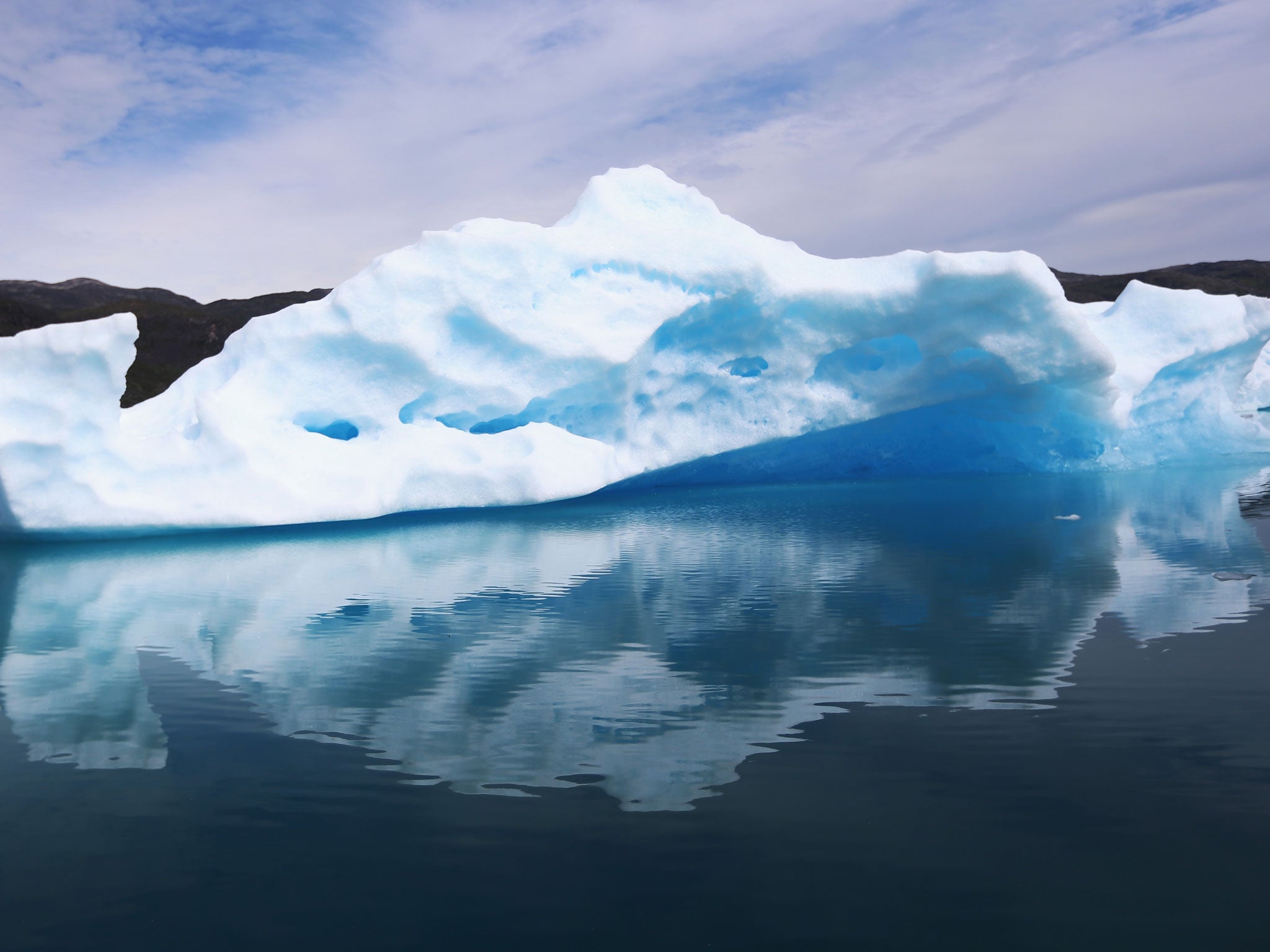That sinking feeling: The glacier which may have sunk the Titanic is now moving at record speeds
Jakobshavn Glacier in the south-west of Greenland is moving at 17km a year

The Greenland glacier that was thought to have been responsible for the sinking of the Titanic is moving four times faster into the sea than it was in 1960s and its instability could result in it moving at 10 times the speed by the end of the century, a study has found.
The Jakobshavn Glacier in the south-west of Greenland, which is believed to have produced the iceberg that sank the Titanic in 1912, is now the fastest moving glacier in the world as a result of a rapid increase in the rate at which the massive Greenland ice sheet is melting, scientists said.
Satellite measurements from space show that last summer the glacier moved at a record speed of 17 kilometres a year, or more than 46 metres per day. The scientists said the speed is unprecedented for any glacier or ice stream in Greenland, the rest of the Arctic or the Antarctic.
“We are seeing summer speeds more than four times what they were in the 1990s on a glacier which at that time was believed to be one of the fastest, if not the fastest, glacier in Greenland,” said Ian Joughin, the lead author of the study and a researcher at the University of Washington in Seattle.
The glacier is pushing more and more ice into the ocean, causing an acceleration in the rate at which it is contributing to rising sea levels, Dr Joughin said. “We know that from 2000 to 2010 this glacier alone increased sea level by about 1 millimetre. With the additional speed it likely will contribute a bit more than this over the next decade,” he said.
Glaciers and ice streams running from the high-altitude interior of Greenland are continually being pushed and pulled to the sea, where giant icebergs break off or “calve” at its leading edge to float off into the ocean. Many end up in the North Atlantic where they can pose a shipping hazard.
The Jakobshavn Glacier drains about 6.5 per cent of the Greenland ice sheet and produces about 10 per cent of Greenland icebergs, amounting to about 35 billion tons of floating ice that eventually melt in the open ocean.
Over the past few years, the speed of this particular glacier has increased threefold on average and fourfold in terms of peak speed, according to the study published in the The Cryosphere, an on-line journal of the European Geosciences Union.
A number of factors have triggered this acceleration, including the thinning and retreat of the glacier further inland as well as rising regional surface temperatures and an increase in the rate of Greenland ice-sheet melting during the summer months.
The front of the glacier, where the icebergs calve off into the sea, has retreated further and further inland since the 19th Century. However, during 2012 and 2013, the front retreated more than a kilometre further inland than in previous summers, the scientists said.
This means there is less and less ice to hold back the flow of the glacier from the ice sheet behind it to the sea in front of it, Dr Joughin said. “As the glacier’s calving front retreats into deeper regions, it loses ice – the ice in front that is holding back the flow – causing it to speed up,” he said.
The topography of the glacier’s underlying bedrock, which is 1,300 metres below sea level, is likely to create more instability and lead to a tenfold increase in the speed of movement compared to 50 years ago, the scientists said.
By comparing pairs of images taken by the German Space Agency’s TerraSAR-X satellite, the scientists were able to produce maps of the glacier and so estimate the rate of flow of its ice, Dr Joughin said.
The glacier is currently flowing from the ice sheet along a deep fjord. Eventually, its front is likely to retreat inland by a further 50km from where it is today, he said.
Jakobshavn is one of the most studied glaciers in Greenland, having been named in 1853 by Danish geologists. The glacier is estimated to have retreated by 30km between 1850 and 1964, but began to accelerate and thin rapidly after 1967.
Scientists believe that one of the possible mechanisms behind the rapid movement to the sea is melting of the glacier’s bottom as it comes into contact with the bedrock, which reduces friction and speeds up the rate of movement.
The Jakobshavn Glacier was the subject of the 2012 documentary film Chasing Ice, which captured the calving of a massive 7.4 cubic kilometre iceberg as it fell into the sea.
Join our commenting forum
Join thought-provoking conversations, follow other Independent readers and see their replies
Comments